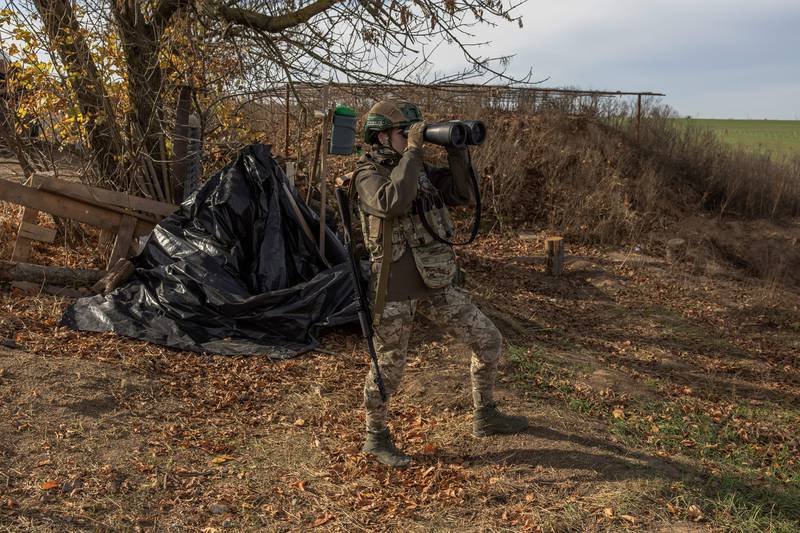MILAN — Ukrainian forces have rigged an elaborate network of sensors in the country that feeds targeting data to heavy machine guns for downing Russian combat drones, according to analysts.
The fallback tactics towards mobile, low-cost defenses come as sophisticated interceptor missiles donated by Western allies are running low.
Last month alone, Moscow fired more than 3,000 guided aerial bombs, 600 drones and 400 missiles at Ukraine, according to remarks made by President Volodymyr Zelenskyy.
The Kremlin has used Iranian Shahed-type exploding drones, which Russia now reportedly also produces domestically, to carry out attacks against Ukrainian population centers. The threat posed by these weapons are the primary focus of the new class of nimble counter-drone setups that can be moved where they are most needed.
RELATED

“Mobile air defense in Ukraine is probably responsible for over 40% intercepts of these systems [Shahed-type drones],” Michael Kofman, a senior fellow at the Carnegie Endowment think tank who frequently travels to Ukraine for research, told Defense News. “This is partly due to the deficit of munitions for valuable interceptive systems like Patriots, IRIS-T, amongst others,” he said.
The cheaper option, he explained, consists of “heavy machine guns, with thermal scopes and tablets, paired on a gun mount.”
Kofman said that the tactics of using firearms to shoot down Russian drones are part of an intricate web of detection systems scattered around the country.
“This system works because the gun crew is part of an elaborate sensor network set up around Ukrainian cities; there is an integrated system for tracking incoming drones, including radar and acoustics, and a robust network of electronic warfare systems,” Kofman said.
“That forces Shahed drones to increase in altitude from their standard low-altitude flight in order to navigate,” he added.
Another cheap sensor network Ukrainians have established to track Russian aerial threats consists thousands of cell phones placed next to microphones atop six-foot poles throughout the country, forwarding incoming engine noise to anti-aircraft artillery units for processing.
In a recent interview with the Wall Street Journal, the commander of U.S. Air Forces Europe, Gen. James Hecker, praised the technique’s success rate.
“They had 84 of them that came in the other day – they detected 84 and shot down 80 with the anti-aircraft artillery units,” the Hecker said.
At a NATO meeting of foreign affairs ministers, held this week in Brussels, Ukraine’s top diplomat Dmytro Kuleba called for allies to provide more air defense weapons.
“Partners did provide us with different systems, we appreciated that, but it’s just simply insufficient, given the scale of the war,” Kuleba was quoted as saying by Reuters.
Elisabeth Gosselin-Malo is a Europe correspondent for Defense News. She covers a wide range of topics related to military procurement and international security, and specializes in reporting on the aviation sector. She is based in Milan, Italy.
- SEO Powered Content & PR Distribution. Get Amplified Today.
- PlatoData.Network Vertical Generative Ai. Empower Yourself. Access Here.
- PlatoAiStream. Web3 Intelligence. Knowledge Amplified. Access Here.
- PlatoESG. Carbon, CleanTech, Energy, Environment, Solar, Waste Management. Access Here.
- PlatoHealth. Biotech and Clinical Trials Intelligence. Access Here.
- Source: https://www.defensenews.com/global/europe/2024/04/05/ukrainian-forces-rig-machine-gun-networks-too-down-russian-drones/



